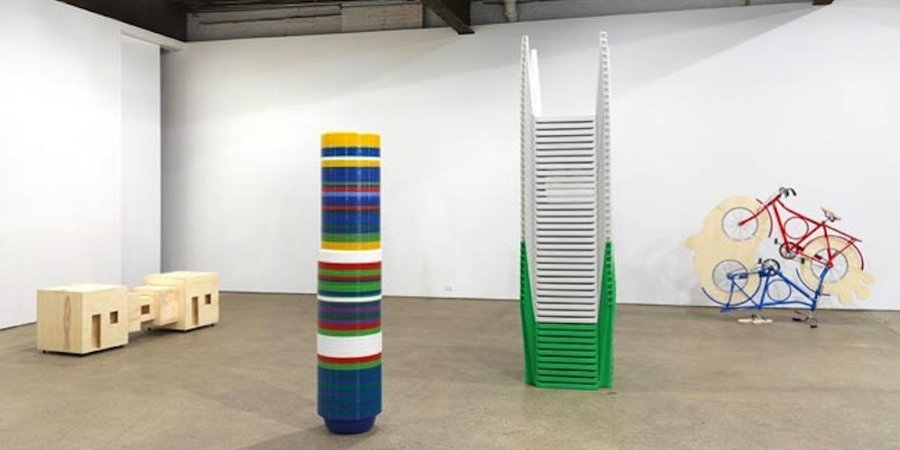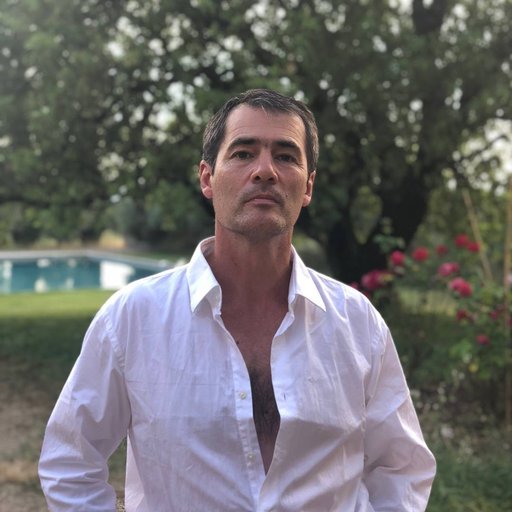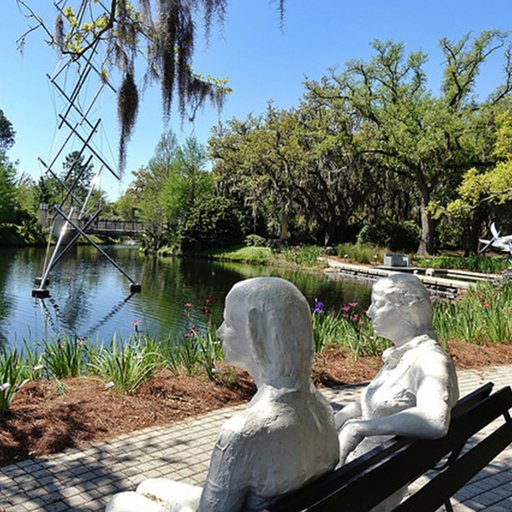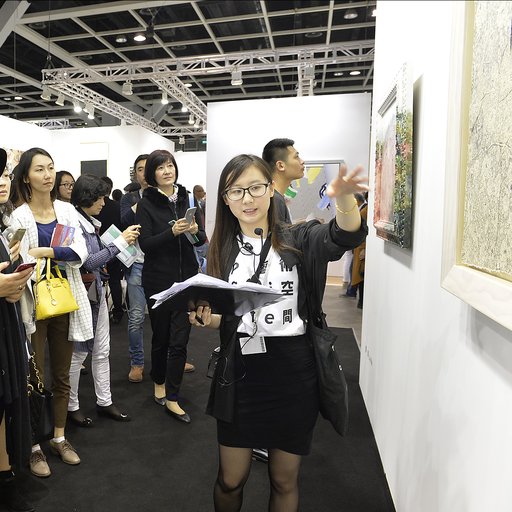There is no doubt—Brazilian art is having its moment, not only at home but also in the United States and Europe. There are reasons for the expansive territorial takeover beyond simply the country’s booming economy. For one thing, Brazil has become a hot destination for new art fueled by Brazil’s strong gallery community, events like the ArtRio art fair and the São Paulo Biennial, and world-class draws like the ever-expanding collection at Bernardo Paz’s Inhotim, the cultural center in Minas Gerais that generates a fever pitch of excitement when it unveils its new acquisitions every year or so. Then, on a broader level, Brazil is on everyone's mind due to the fact that it will host two major international athletic events in the next few years: the 2014 FIFA World Cup and the 2016 Summer Olympics, both in Rio de Janeiro. The spotlight generated by all of these elements has served to cast one fact in sharp relief: Brazil, over the last century, been generating spectacularly rich art.
Within the work of contemporary Brazilian artists, one can find the history of the country, spanning from 20th century modernity back to the colonial period. The language they adopt is rooted in the cultural vernacular of Brazil, overloaded by the sensory experience of the tropics, including touch and sound. It is a language unique to Brazil. The use of everyday materials has been a foundation of the country’s art since the mid-1950s and 1960s, when artists like Lygia Clark and Hélio Oiticica transformed found objects—from cloth to metal and colored glass—into spaces for colorful expressions that appeal to both the mind and the body. This aesthetic, native to the country’s art, was celebrated in Caetano Veloso’s classic 1968 song "Tropicalia," in which he describes a monument “made of crépon paper and silver."
A veritable feast of exhibitions showcasing Brazilian artists has materialized in major museums around the world in recent months, most prominently the important retrospective of Mira Schendel at Tate Modern (running through January), where over 250 artworks spanning the arc of her career are on view, many for the first time. Although Schendel shared the walls of MoMA with León Ferrari four years ago, the Tate exhibition is one of the largest ever mounted of her work.
At the same time, the Serralves Foundation in Portugal is hosting a retrospective (previously presented at the Reina Sophia in Madrid) of one of the most radical Brazilian contemporary artists, Cildo Meireles. At the core of his work are issues of territoriality and colonial history, expressed through everyday objects that the artists subversively modifies, from glass Coca-Cola bottles inscribed with text to altered dollar bills to monumental works like a tower of Babel composed of radios tuned in different stations. With Meireles's larger installations in the show, viewers are confronted by entire rooms filled with art, engaging them to experience the work through direct participation, either by walking through it or inhabiting the space.
At Île-de-Vassivière’s Centre International d’Art et du Paysage in France, the artist Fernanda Gomes is showing works constructed with wood pieces, fabric, pieces of glass, and other found materials. Gomes does not hide anything: she works directly with the materials without any modification, thus laying bare the artistic process. What she does change are intrinsic qualities of the room in which the art is displayed, such as the lighting and wall colors, using these elements to transform the mundane objects into works of art.
Laura Lima, working around the subject of social relations and human behavior, currently has two performance artworks at Zürich’s Migros Museum that she is directing from a distance: the artists, who lives and works in Rio de Janeiro, has dispatched actors in her stead to enact dramaturgic scenes from her hometown.
In New York City, the Bronx Museum is presenting a retrospective of 140 artworks from the last 40 years by Brazilian artist Paulo Bruscky. Among the highlights of the exhibition are his video performances and word-based works, including mail art. Not related to the Neo-Concrete movement, Bruscky is usually affiliated with Fluxus and recognized as one of the pioneers of performance art in Brazil.
A more easily accessible piece, in more ways than one, can be found at the 60th-street entrance of Central Park, where the Public Art Fund has commissioned a sculpture by Iran do Espírito Santothat consists of a huge cube mysteriously casted in a single piece. Children and adults alike climb on it and interact with it, echoing the title of the work, Playground.
The exaltation of Brazilian has been in evidence across New York’s galleries in recent months. In September, the New York gallery Hauser & Wirth reunited some of the most important postwar Brazilian artists in “Sensitive Geometries,” a show that laid out how a generation of unique talents reclaimed Brazil's legacy from decades of having its culture shaped by foreign influences. The resulting modernity that permeated Brazil in the middle of the 20th century was suffused with a sensibility particular to the country, translated visually through a rhythm of geometric forms and colors.
At Simon Preston Gallery, Jessica Mein presents a cohesive selection of wood constructions reclaimed from discarded billboards in São Paulo. The wall-based works are scanned, ripped, and cut in delicate abstractions. The resulting collages echo the Neoconcrete movement in their geometric forms. Each work is called an "obra," which translates either as a "work of art" or a "site of construction."
Caetano de Almeida’s most recent colorful work at Eleven Rivington introduced circular cutouts at the core of his well-known large-scale geometric paintings and watercolors. The sinuous lines combined with round cutout shapes create harmonious movements and unexpected surprises within the flat surfaces of the canvas.
Sandra Cinto presented “Piece of Silence” at the Tanya Bonakdar Gallery, an installation of a bronze flute and several white string instruments hanging on walls that were drawn with parallel lines reminiscent of musical scores. Since the entire room was painted in white—instruments included—the wall arrangements, with the instruments set against the lines, took on the appearance of minimal drawings that invited to musical reverie.
The theme of Tatiana Blass’s exhibition at the Johannes VogtGallery was the dynamics of communication, recorded dialogues, and public speeches. In a series of oil paintings, one video, and two sculptures, she blurred the boarders between the speaker and the audience, the microphone and the interviewed, the camera and the interviewer.
At Tierney Gardarin Gallery in Chelsea, Janaina Tschäpe presented “The Ghost in Between,” a 10-minute, two-channel video powerfully related to earth and nature -a journey through the Amazon river. The video is reminiscent of the 19th-century “découverte” of Brazil’s exotic tropical regions. For New Yorkers, it functions as a contemporary look on the Amazon landscape.
Brazilian furniture designers are not left behind. The iconic Joaquim Tenreiro (1906-1992) is showing at R20th Century, while Zanini de Zanine and Isay Weinfeld are at Espasso, also in Tribeca. In the work of all three, the Brazilian style is expressed through the confluence of modern forms with the aesthetic quality of such local materials as woven cane and Brazilian hardwoods. The result stresses both the objects’ form and the lusciousness of the wood.
Both Anton Kern Gallery in Chelsea and Tilton Gallery at the Upper East Side of Manhattan, where solo shows of Marepe and Jarbas Lopes are currently on view, position these artists as heirs of the 1960s Brazilian Neoconcrete movement. Marepe transforms such daily objects as irons, brooms, and plastic buckets into artworks by matching them with one another or changing their functionality. Among the most striking pieces are a bike turned into a large sculpture of a fish, and a column made by piling up ordinary, if colorful, plastic bowls. Lopes presents, among other works, a group of sizable canvasses featuring panels of wrapped woven elastic, appealing to the viewer’s sense of touch.
Reinforcing the idea of the sense of touch, “Brasiliana” at the Schirn Kunsthalle in Frankfurt is an exhibition that focuses on the notion of tactility. As explained by curator Martina Weinhart, the installations are charged by political and social statements and require the public's participation, like in the work by Hélio Oiticica and Neville D'Almeida.
This relationship between contemporary and modern Brazilian artists is the subject of “Imagine Brazil,” an exhibition currently at the Astrup Fearnley Museet in Oslo. The curators Hans Ulrich Obrist and Gunnar B. Kvaran invited each of the young participating artists to select a “mentor” as a way to imagine and reconstruct the artistic bonds between figures of the 1950s and today. In the process, the boundary between modern and contemporary, and the past and the present, becomes blurred.
Next February, meanwhile, Ernesto Neto will occupy the Guggenheim Bilbao with an exhibition called "The Body That Carries Me," consisting of sculptural environments that can be penetrated, felt, and smelled, allowing for a total sensorial experience.
In London, Adriana Varejão just closed a show at Victoria Miro Gallery where she presented a series of individual female portraits centered on issues of race. Prompted by a national poll that asked “What color is your skin?” Varejão reflects in these works on the perspective Brazilian women have of themselves with respect to their complexion and race, and on historical and racial issues derived from the country’s colonization. The work alludes to centuries of cultural and social traditions, and it summarizes not only the history of the country but also the socio-cultural engagement of contemporary Brazilian artists.



























